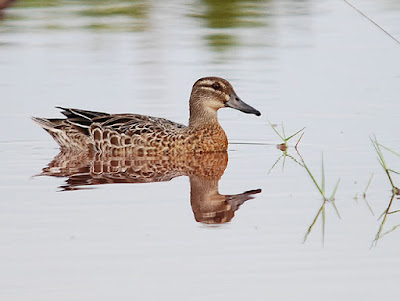After a rather taxing trip to Perlis yesterday, I decided to take
things easy today and visited good old Pulau Burung in my home state of Penang. However, all the rare migrants must have moved on
as they were nowhere to be seen. And the locality is back to normal again – in
terms of birds and the number of birders present. Today, I had the locality all
to myself. Perhaps the thought of spending the day at a landfill is a little
inappropriate since it is the Lunar New Year after all. But spending time with
family and friends is part of the joy of this festive season and to me, the
birds are certainly friends.
The Watercock may be the largest rail in Malaysia but it is also one of the
shyest. Although still relatively common throughout its range, good views are
hard to come by. This locality is well known for its exceptionally friendly
birds but I guess that does not apply to the elusive Watercock – not completely
anyway. So, when I came across a non-breeding bird foraging at the water’s
edge, I naturally stop and took a few record shots.
The Common Moorhen is slightly more tolerant to human presence and I took the time to observe this lovely pair basking in the early morning sun. Pulau Burung has a healthy number of this species and is also probably its last stronghold in the state.
I decided to spend more time at the surrounding mangrove forest for
a change and hoping to possibly come across something interesting. Who am I
kidding – I was really hoping to find a rare! A small hawk resting among the
foliage provided a glimmer of hope for a rarity. These small raptors are
certainly not easy to identify especially the females and juveniles and upon
further scrutiny, it turned out to be a female Japanese Sparrowhawk – the
commonest of all the migratory hawks. It is still a good sighting as I feel
that its number is dropping here in Penang and I can’t recall when was the last
time I saw one perched.
An improvement shot of the Brahminy Kite from what I managed to take
during the last visit. In fact, I think it is the same individual because it
was in the same area and just as confiding.
It was certainly a hot and sunny day and I could see that I was not
the only one affected by the heat. This Collared Kingfisher taking shelter deep
inside the mangroves couldn't agree with me more.
A male Oriental Magpie Robin proclaiming his territory with his
tantalizing song from an exposed perch.













































































